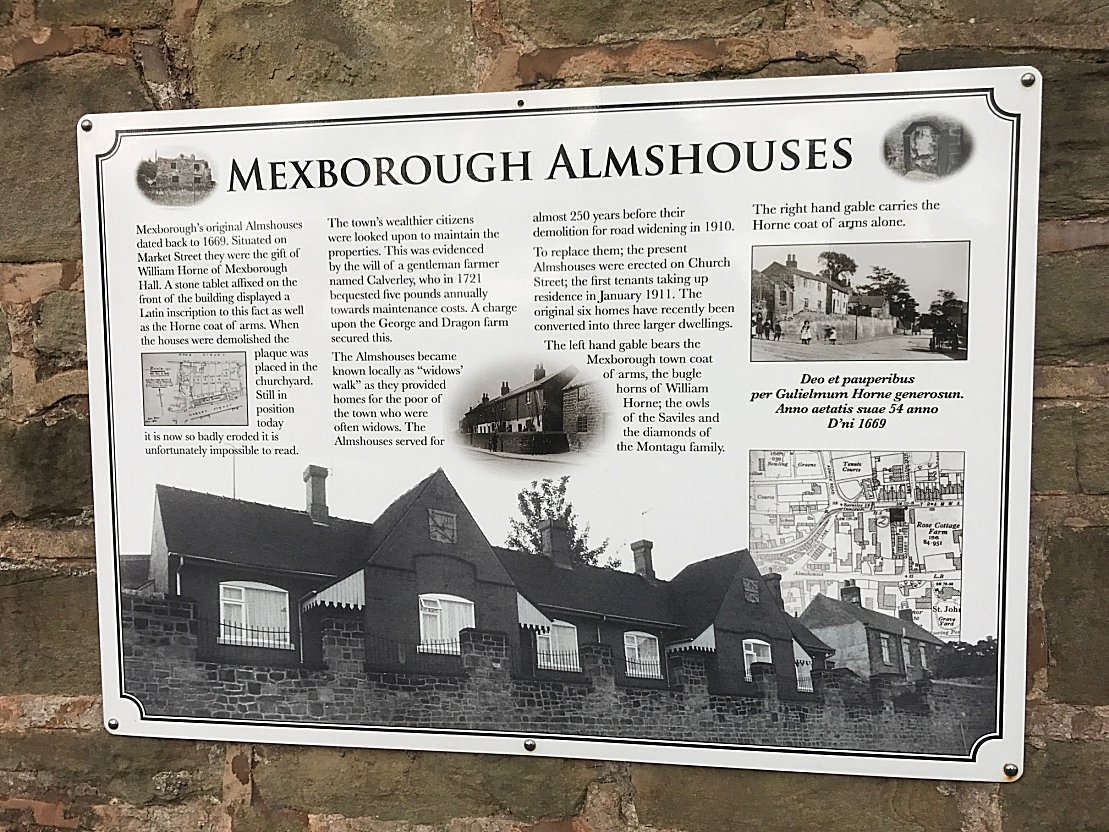Former Distinguished Residents
Two families of distinction had residences in Mexborough. One, the Horne family, had for their arms “Argent a fessgules, in chief a chevron between three bugle horns, and in base the same, all gules.”
The Church contains a memorial to William Horne of Mexborough who died 26 of March 1679, at the age of 63. He gave certain Almhouses for the poor of the town in front of which was inscribed:
“Deo et pauperibus
per Gulielmum , Horne, generosum,
Anno aetatis suac 54, anno D’ne 1669

At the house known as the Hall they lived for three or four generation a branch of the widespread Savile family. The first of this family to settle at Mexborough was Samuel Savile, whose arms were “Argent, on a bend sable three owls of the field.”
He was at one time student and fellow of King’s College, Cambridge, and is described as philosopher mathematician and poet. He was employed at the English embassy in France as secretary to our ambassador, James, Earl of Carlisle.
After serving at Court for many years he married, and retired to the country, making Mexborough his home. In the Civil War he suffered severely as a prominent Royalists. He was imprisoned at Hall, and died at the ripe age of 71 in the year of restoration, and was buried in Mexborough Church, which contain numerous memorials to this family.
Subsequently his Mexborough possessions were sold by this man’s grandson to another branch of the Savile family which had flourished near Pontefract since the days of Elizabeth, and who were the lessees of the rectory – that is the rectorial tithes – from the Archdeacon of York.
Rushworth mentioned that in 1647 Lt Col Rample was condemned to death for killing a man at Mr Savile’s house at Mexborough.
The Earldom of Mexborough dates from 1765, when John Lord Pollington, being created an Earl, selected the town of Mexborough as his title.
Writing in 1804 Miller mentioned that on Mexborough Common are several coal pits and a large stone quarry. He also mentioned a rather curious custom with regard to a considerable tract of pasture land adjoining that part of the parish called the Ings, lying on the north bank of the river. From Midsummer to Lady Day (25th March) this was considered as common pasture, and could be used by the people generally, but from Lady Day to Midsummer it was claimed by the owners of land in the parish, and its use was his restricted to the occupiers of their farms.